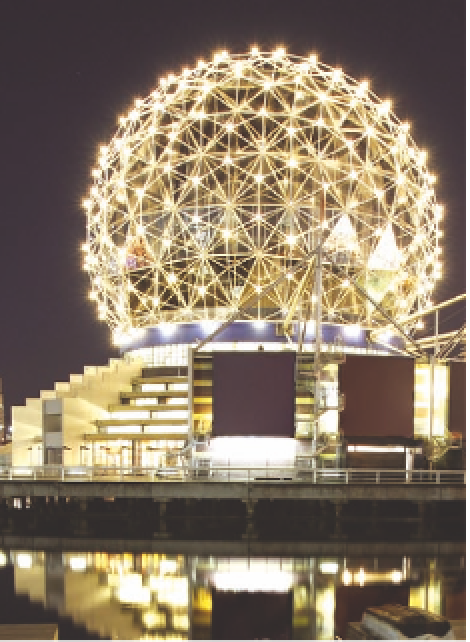Travel Reference
In-Depth Information
IN MEMORIAM
To commemorate the December 6, 1989 shooting of 14 young
women at the École Polytechnique de Montréal, the Women's
Monument Committee unveiled a monument entitled
Marker of
Change
on the eighth anniversary of the tragic event in 1997. Created
by Torontonian Beth Alber and erected in Thornton Park, near the
train and bus station, it features 14 pink granite benches laid out in a
circle, each one bearing the name of one of the victims of the massa-
cre. The monument's dedication, in honour of all women murdered
by men, is written in seven languages.
years, two thirds of False Creek, as ex-
plorer George Vancouver had known
it in 1790, has disappeared under as-
phalt.
tion had left the area a mess. The City
purchased the site, quickly cleaned it
up, and during the summer of 1986
hosted Expo 86, a world's fair that at-
tracted several million visitors in the
space of a few months. The vast stretch
of unused land along the north shore of
False Creek was occupied by dozens of
showy pavilions with visitors crowding
around them. The City then rezoned the
land for residential and commercial use
and sold it to a Hong Kong tycoon for
$145 million. At the end of False Creek
is the large silver sphere that houses
Science World
, the only Expo 86 pa-
vilion built to remain in place after the
big event.
By the early 1980s, the sawmills and
other industries had disappeared and
a century's worth of industrial pollu-
The industrial area of Yaletown
developed in 1887 when the west-
ern terminal of the Canadian Pacifi c
Railroad (CPR) was moved from Port
Moody to Vancouver. The growth of
3
The dome of Science World, formerly an
Expo 86 pavilion.
© iStockphoto.com / Dan Barnes
4
The modern towers of the False Creek
neighbourhood.
© iStockphoto.com / Kevin Miller





Search WWH ::

Custom Search